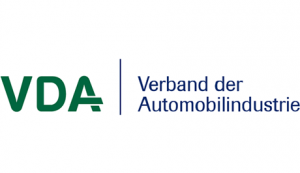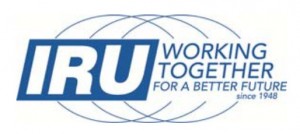How to further reduce CO2 emissions from roadfreight transport was the topic of a joint debate organised by the International Road  Transport Union (IRU), the German magazine VerkehrsRundschau and the German Association of the Automotive Industry (VDA) at this year’s IAA Commercial Vehicles in Hanover. In the framework of the recently published European Commission strategy to reduce fuel consumption and CO2 emissions from heavy duty vehicles (HDVs) the debate acknowledged the progress made so far and the plans to proceed with decarbonising road freight transport but also identified the barriers that are hindering the industry’s ability to make further progress.
Transport Union (IRU), the German magazine VerkehrsRundschau and the German Association of the Automotive Industry (VDA) at this year’s IAA Commercial Vehicles in Hanover. In the framework of the recently published European Commission strategy to reduce fuel consumption and CO2 emissions from heavy duty vehicles (HDVs) the debate acknowledged the progress made so far and the plans to proceed with decarbonising road freight transport but also identified the barriers that are hindering the industry’s ability to make further progress.
Speakers called for greater transparency on the technologies available to further reduce fuel consumption and CO2 emissions and highlighted the regulatory constraints and investment difficulties involved in investing in new, greener vehicles.
 Michael Nielsen, IRU General Delegate to the European Union said, “Positive results can be noted in terms of fuel consumption and CO2 emission reductions as hauliers achieve economic benefits in terms of efficiency increases and cost reductions. But, more solutions should be offered and transport operators need to be encouraged to get involved through better guidance on available solutions and incentives to invest. Transport Associations in several countries have already taken the lead in providing such guidance to their operators.”
Michael Nielsen, IRU General Delegate to the European Union said, “Positive results can be noted in terms of fuel consumption and CO2 emission reductions as hauliers achieve economic benefits in terms of efficiency increases and cost reductions. But, more solutions should be offered and transport operators need to be encouraged to get involved through better guidance on available solutions and incentives to invest. Transport Associations in several countries have already taken the lead in providing such guidance to their operators.”
Dr Kay Lindemann, Managing Director of the VDA, pointed out “that the fuel consumption of heavy trucks had already been reduced by about 60 percent since the 1960s.” He underlined that “market forces set strong incentives for the industry to bring fuel consumption further down. Manufacturers get clear signals from their customers that fuel efficiency is a crucial issue in investment decisions.”
Michael Nielsen, IRU General Delegate to the European Union said, “Positive results can be noted in terms of fuel consumption and CO2 emission reductions as hauliers achieve economic benefits in terms of efficiency increases and cost reductions. But, more solutions should be offered and transport operators need to be encouraged to get involved through better guidance on available solutions and incentives to invest. Transport Associations in several countries have already taken the lead in providing such guidance to their operators.”
Dr Kay Lindemann, Managing Director of the VDA, pointed out “that the fuel consumption of heavy trucks had already been reduced by about 60 percent since the 1960s.” He underlined that “market forces set strong incentives for the industry to bring fuel consumption further down. Manufacturers get clear signals from their customers that fuel efficiency is a crucial
issue in investment decisions.”
Dr Lindemann said, “Vehicle manufacturers will continue their efforts to further improve the trucks’ energy efficiency. But technical innovations alone will not be enough. Joint efforts are 2 necessary. Operators, drivers and policymakers must contribute as well. For example, public infrastructure investment is an important pillar of a sustainability strategy for road transport. When traffic jams due to insufficient infrastructure lead to an increase in fuel consumption all the industry’s efforts are in vain.”